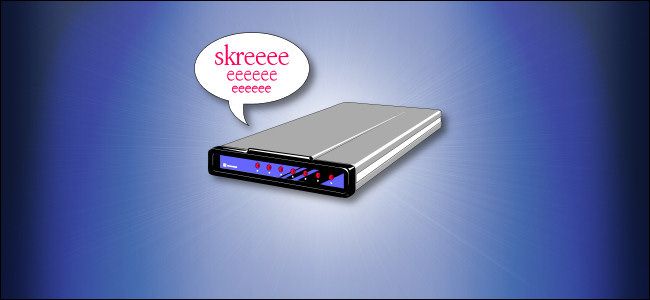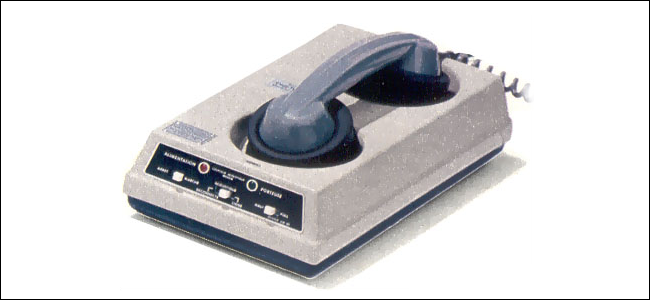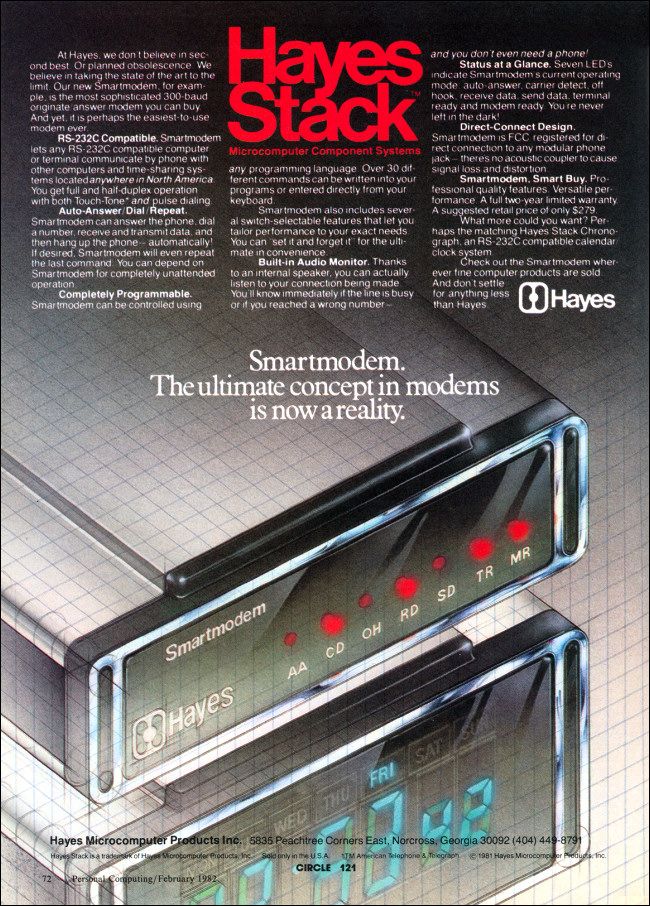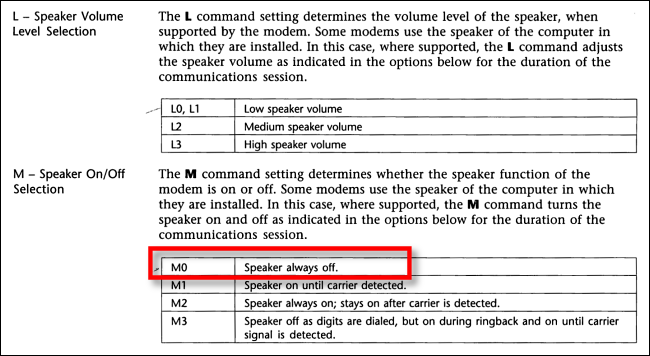Quick Links
Screeeech . . . hisss . . . squaawk. These are familiar sounds to anyone who's ever used dial-up internet or called BBSes. It seemed especially noisy late at night. Have you ever wondered why all that noise was necessary? And did you know you could have muted your noisy modem?
Wait, What's a Modem?
In the olden days, people had to use a peripheral called a dial-up modem to connect to online services or link two remote computers. Dial-up modems were designed to work with the ordinary wired telephone network that linked nearly every home and business in the developed world.
Using special software, your computer would tell your modem the telephone number to dial. Your modem would then connect to another modem (and computer) at the other end of the line. The two computers could then share data, such as files or messages.
The word "modem" is a portmanteau of "modulate" and "demodulate." Modems take digital data and convert (modulate) it into audio frequencies that can be transmitted over the analog voice phone network. The modem on the other end of the line receives those sounds and converts (demodulates) them back into binary data a computer can understand.
A similar principle was used to store digital data on analog compact audio cassettes during the early home PC era of the 1970s and '80s.
Why the Screeches?
If you interrupt a modem connection by picking up a telephone handset and listening, you'll hear screeches, hissing, buzzing, and various other noises.
"That is the actual sound of the data being sent and received," said Dale Heatherington, a co-founder of Hayes Microcomputer Products and the circuit designer of the first direct-connect modem with a speaker.
In particular, the sounds you hear at the beginning of a modem connection are the two modems "handshaking." Handshaking is the process of two modems testing the waters, and negotiating settings, such as which speed and compression methods to use.
This detailed chart, created by programmer Oona Räisänen in 2012, breaks down all the sounds you hear during the handshaking process.
But, wait a minute, why are we listening to modems perform this intimate dance in the first place?
Why Did Modems Even Have Speakers?
Prior to 1984, the U.S. telephone network was a monopoly controlled by AT&T. The firm had strict rules about who was allowed to connect a device to its network. To get around this, the earliest dial-up modems used devices called acoustic couplers. This allowed modems to be acoustically, but not electronically, linked to the network.
To operate a modem with an acoustic coupler, you would pick up the phone, dial a number, and then listen for either a modem or person to answer on the other end. When all was clear, you set the receiver down in two cups that acted as a microphone and speaker. The connection would then begin.
After new FCC rules relaxed AT&T's restrictions in the mid-1970s, firms began to create direct-connect modems that hooked directly to the telephone system using modular plugs.
However, if a direct-connect modem dialed out and failed to establish a connection, there was no longer a telephone receiver at your ear to let you know what was wrong. A line could be busy or disconnected, an answering machine could pick up, or you could reach a fax machine instead.
To solve this problem, Hayes Microcomputer Products included an internal speaker in its breakthrough 1981 modem for personal computers, the Hayes Stack Smartmodem 300.
Heatherington designed the circuitry and firmware of the Smartmodem 300 and maintains a wonderful website of old photos of his time at Hayes. We asked him via email why he included a speaker in his modem design.
"So the user would know if the line was busy, a person answered, or a modem answered," he replied.
Sure enough, an early print advertisement for the Smartmodem 300 highlights exactly these benefits of the modem's speaker, including monitoring the handshaking process:
Built-in Audio Monitor. Thanks to an internal speaker, you can actually listen to your connection being made. You'll know immediately if the line is busy or if you reached a wrong number---and you don't even need a phone!
"As I recall I there was some resistance to the idea because of cost," Heatherington said. "But the benefits were worth it."
Hayes pioneered many technologies used in dial-up consumer modems in the 1970s and '80s. Features of Hayes modems, including the internal speakers, were widely copied among competitors.
Since then, almost every dial-up modem built has included an option for audio feedback of the connection process. You can thank Heatherington for your 1990s dial-up modem nostalgia.
How Do You Turn Off the Screeches?
Not coincidentally, the first modem with a built-in speaker---the Smartmodem 300---was also the first that allowed you to turn off that speaker. You did it with special codes called the Hayes Command Set. This allowed people to change modem settings via simple commands with an
AT
prefix that were sent through terminal software.
To turn off the speaker, you simply sent the serial command
AT M0
before dialing. (Tuck it into your modem initialization string.) You could also control the volume of the speaker using commands like
AT L1
. Here's a page from the 1992 Hayes Modem Technical Reference that explains it all.
In semi-modern versions of Windows, you can turn off modem connection sounds in "Phone and Modem Options" in the Control Panel. With internal modems on Mac OS X or later, you can simply mute the system volume.
But, hey, if you're using a dial-up modem in this day and age, why not bask in the modulated tones of history?




